Tying a rope securely is a vital skill that ensures fishermen can anchor their boats safely, preventing drifting and equipment damage at sea. While many think tying a rope is simple, one wrong knot can cause the boat to lose balance in strong waves. In this guide, SIAM Brothers Vietnam provides step-by-step instructions on popular knot types such as the Bowline, Clove Hitch, and Figure Eight — helping you achieve strong, easy-to-untie, and load-resistant knots in all marine conditions.
Join SIAM Brothers Vietnam to discover how to tie a rope securely, ensuring durability and absolute safety for every voyage.
1. Why It’s Important to Tie a Rope Securely When Anchoring a Boat
When heading offshore, tying a rope securely is not just a basic technical step — it’s a critical factor for the safety of your boat, crew, and equipment. A properly tied knot allows the rope to handle heavy loads, reduce anchor slippage, and protect the entire anchoring system even in rough seas.
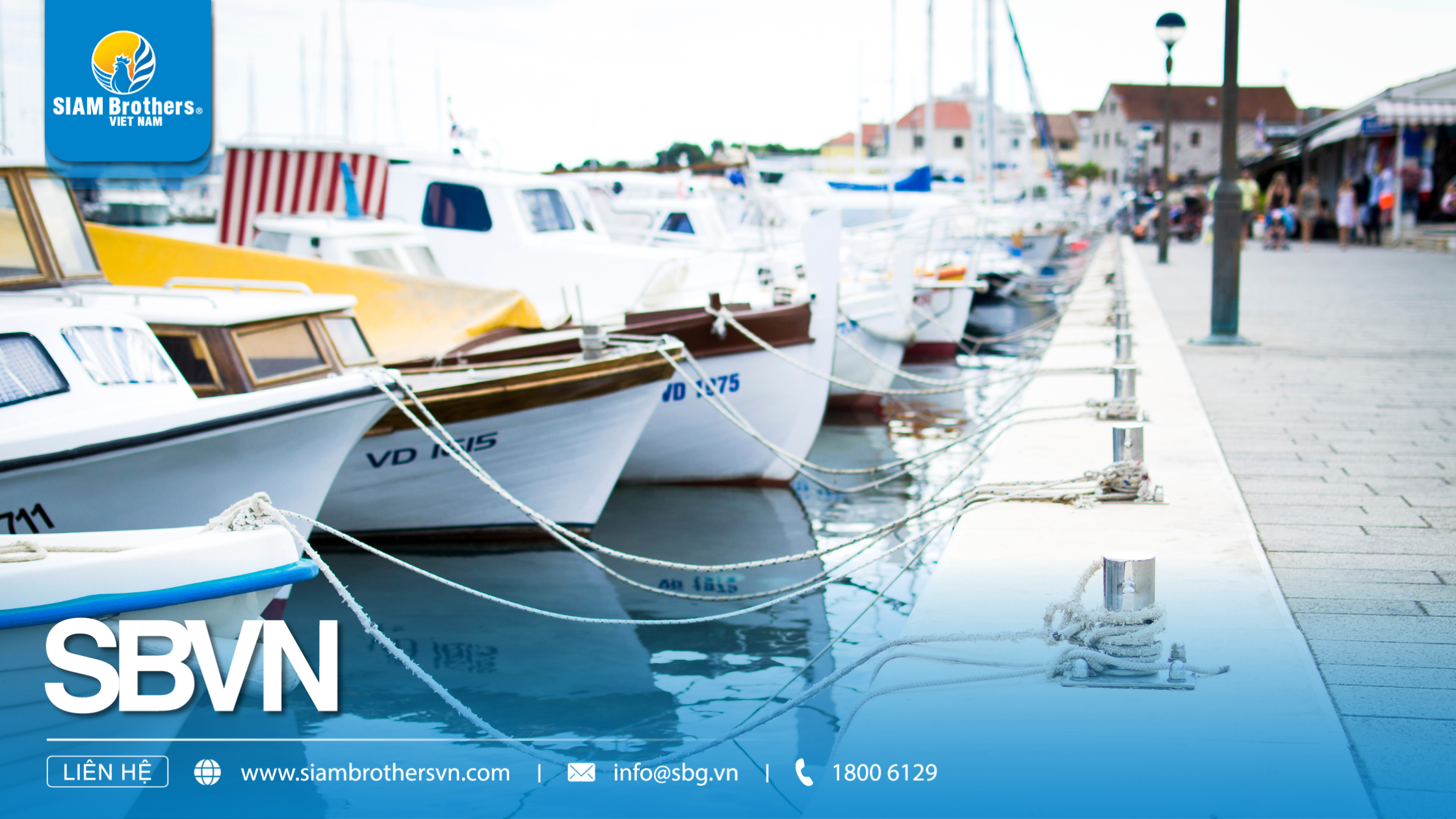
1.1. Ensures Safety for Boats and Fishermen During Mooring
- In rough waves or strong currents, the rope acts as the main stabilizer that keeps the boat in place. If the rope is not tied securely, uneven tension can cause the vessel to drift or collide with obstacles.
- Knowing how to tie a rope securely helps maintain the boat’s balance and minimizes impact against docks or nearby vessels — a fundamental skill every fisherman should master before a long sea journey.
1.2. Reduces Equipment Damage and Maintenance Costs
- Anchor ropes, hooks, and posts endure direct tension when a boat is moored. Incorrectly tying the rope can lead to friction, abrasion, or fiber breakage, shortening the rope’s lifespan.
- By applying the correct rope-tying techniques, the tension is evenly distributed, reducing wear and protecting both the rope and the anchoring equipment.
- This practice not only saves repair costs but also extends the service life of PP, Nylon, and PE ropes — durable materials manufactured by SIAM Brothers Vietnam.
1.3. Maintains Anchor Stability in Harsh Weather
- During storms or heavy swells, the pulling force from seawater can exceed a rope’s standard load capacity. Loose knots may cause the anchor to slip or dislodge from its position.
- Learning how to tie a rope securely for anchoring ensures the anchor point remains stable, prevents the boat from drifting, and helps the vessel stay bow-on against the waves to reduce impact forces.
- This is an essential safety measure for fishermen anchoring at ports or in aquaculture zones.
2. Step-by-Step Guide: 5 Ways to Tie a Rope Securely for Anchoring
2.1. Anchor Hitch – The Most Reliable Knot for Fixed Anchoring
- The Anchor Hitch is designed to hold the rope firmly on a hook or metal ring, preventing slippage when the boat moves. Wrap the rope twice around the hook, then thread the end through the loop to create high friction.
- This is one of the most secure rope-tying methods for anchoring boats in deep water or strong currents.
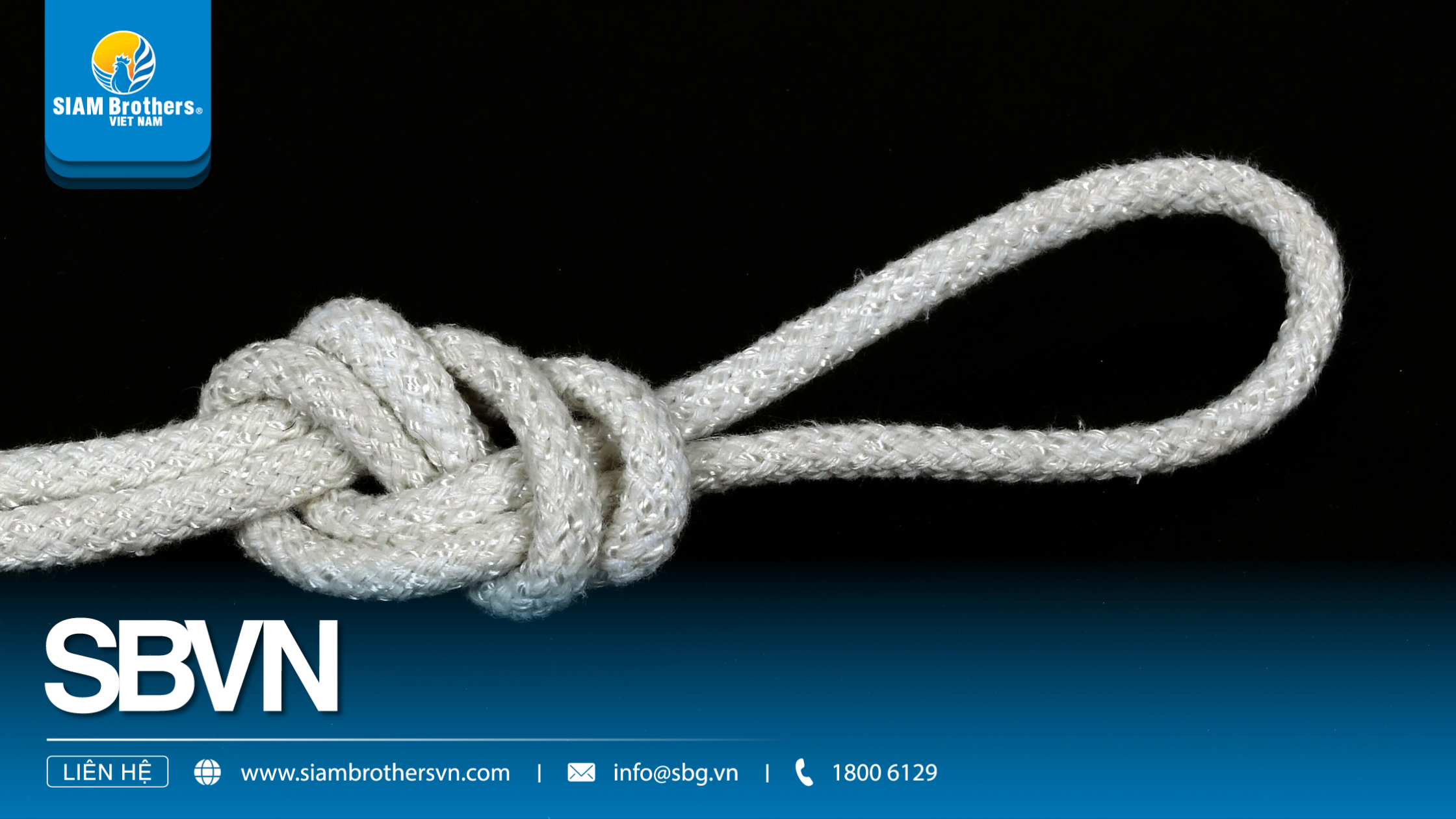
2.2. Double Sheet Bend – Joining Two Ropes of Different Sizes
- When you need to extend your main rope using a secondary one, the Double Sheet Bend ensures a strong and reliable connection without slipping.
- It’s ideal for fishing or transport vessels requiring longer rope lengths. For maximum security, tie two turns and pull both ends firmly in opposite directions.
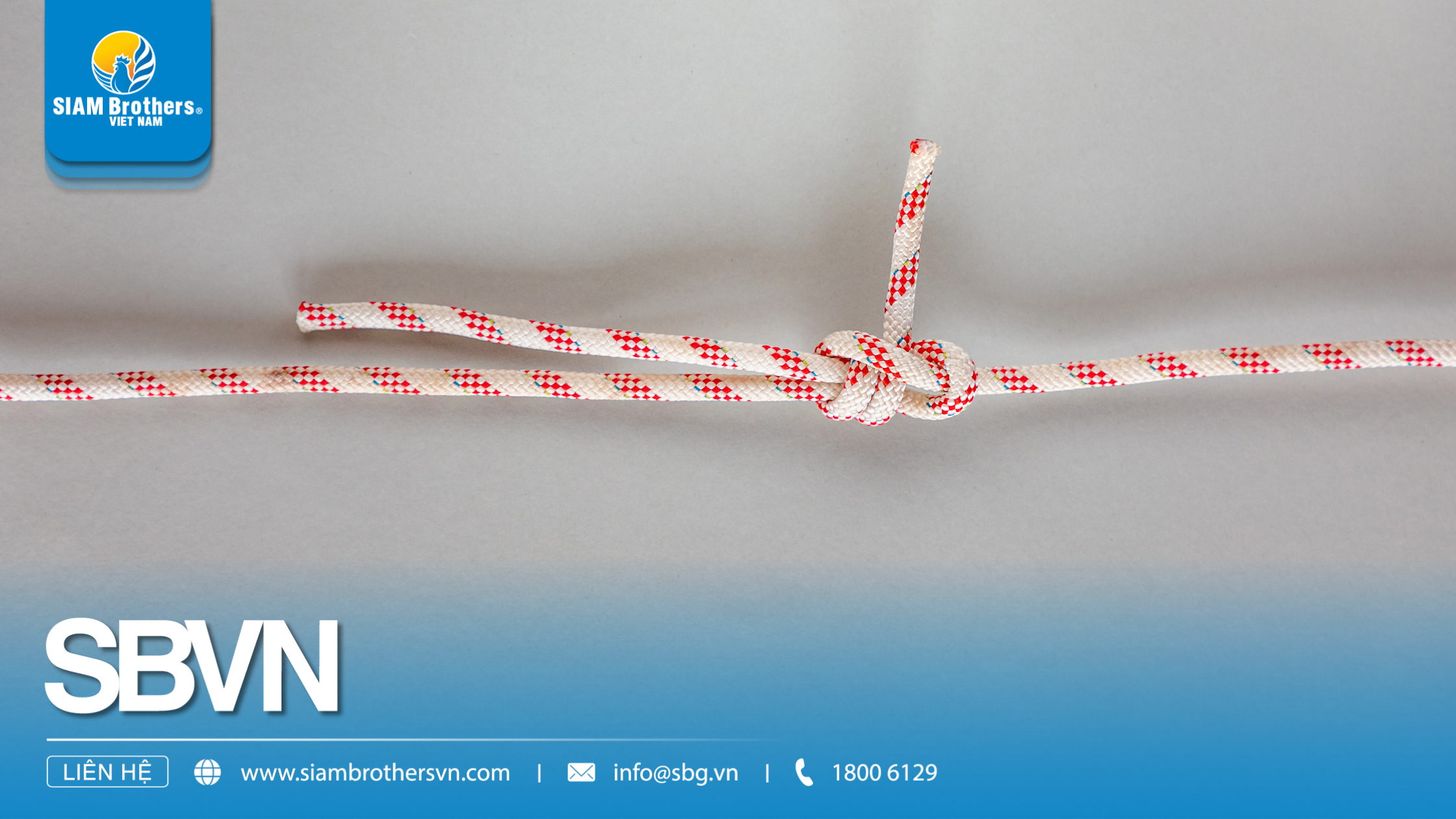
2.3. Bowline Knot – Creating a Fixed and Strong Loop
- The Bowline Knot forms a stable loop at the end of a rope, perfect for attaching to a post or anchor buoy. Its structure prevents tightening under heavy load, making it ideal for quick anchoring.
- This knot is widely recommended in maritime safety guides on how to tie a rope securely at sea.
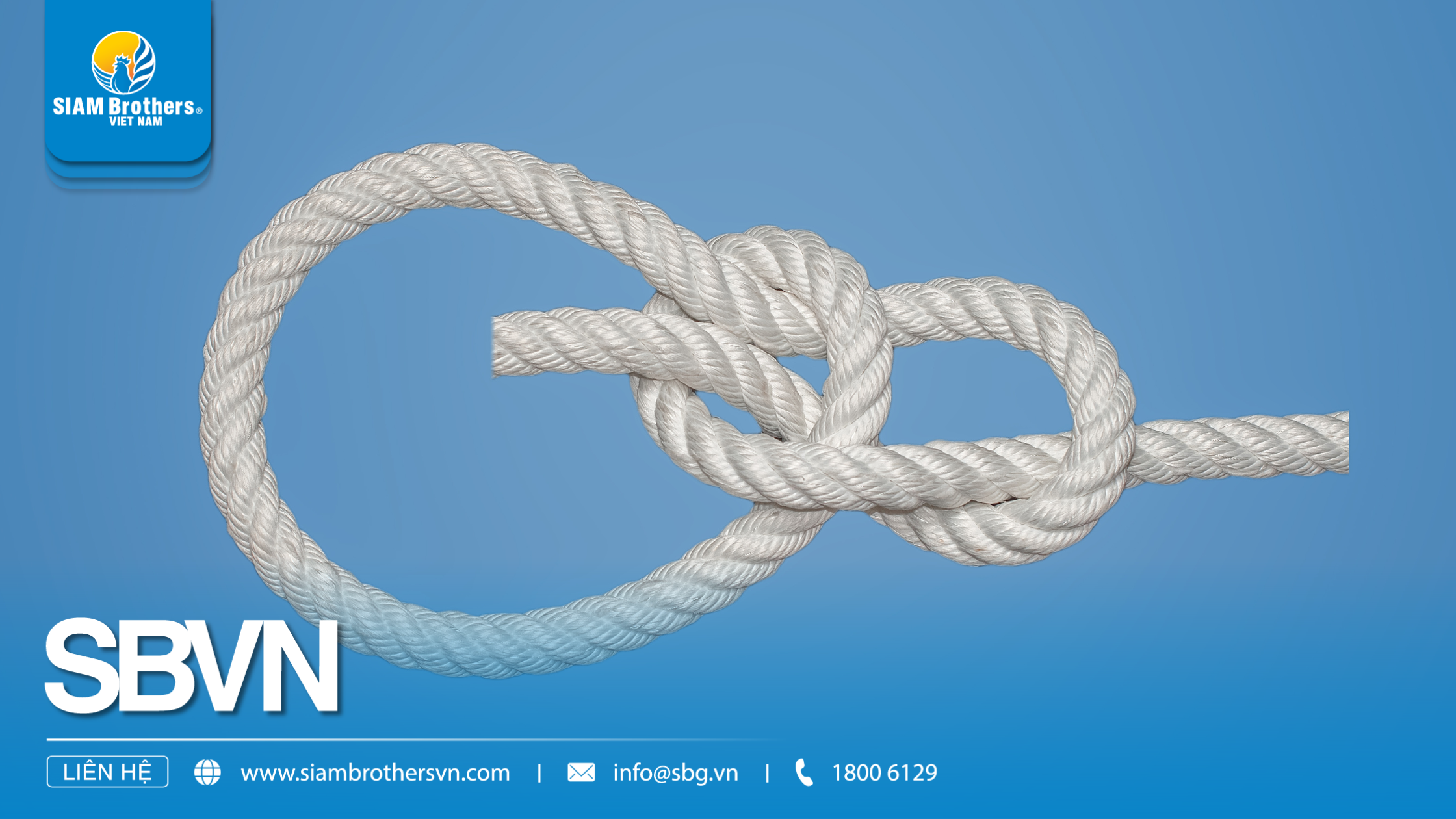
- Simple to tie and untie, the Figure Eight Knot creates a firm stopper that prevents the rope from slipping under tension. It’s perfect for the end of anchor lines or mooring ropes.
- When using PP or Nylon ropes made by SIAM Brothers Vietnam, this knot enhances friction and durability — doubling resistance compared to regular ties.

2.5. Clove Hitch – Easy to Adjust for Temporary Mooring
- The Clove Hitch allows quick tying around posts, rails, or temporary anchor points when docking. It’s easy to adjust and reuse, ideal for fishermen who need flexibility during operations.
- While not as strong as the Anchor Hitch, it’s still a smart choice for short-term, secure rope-tying needs.
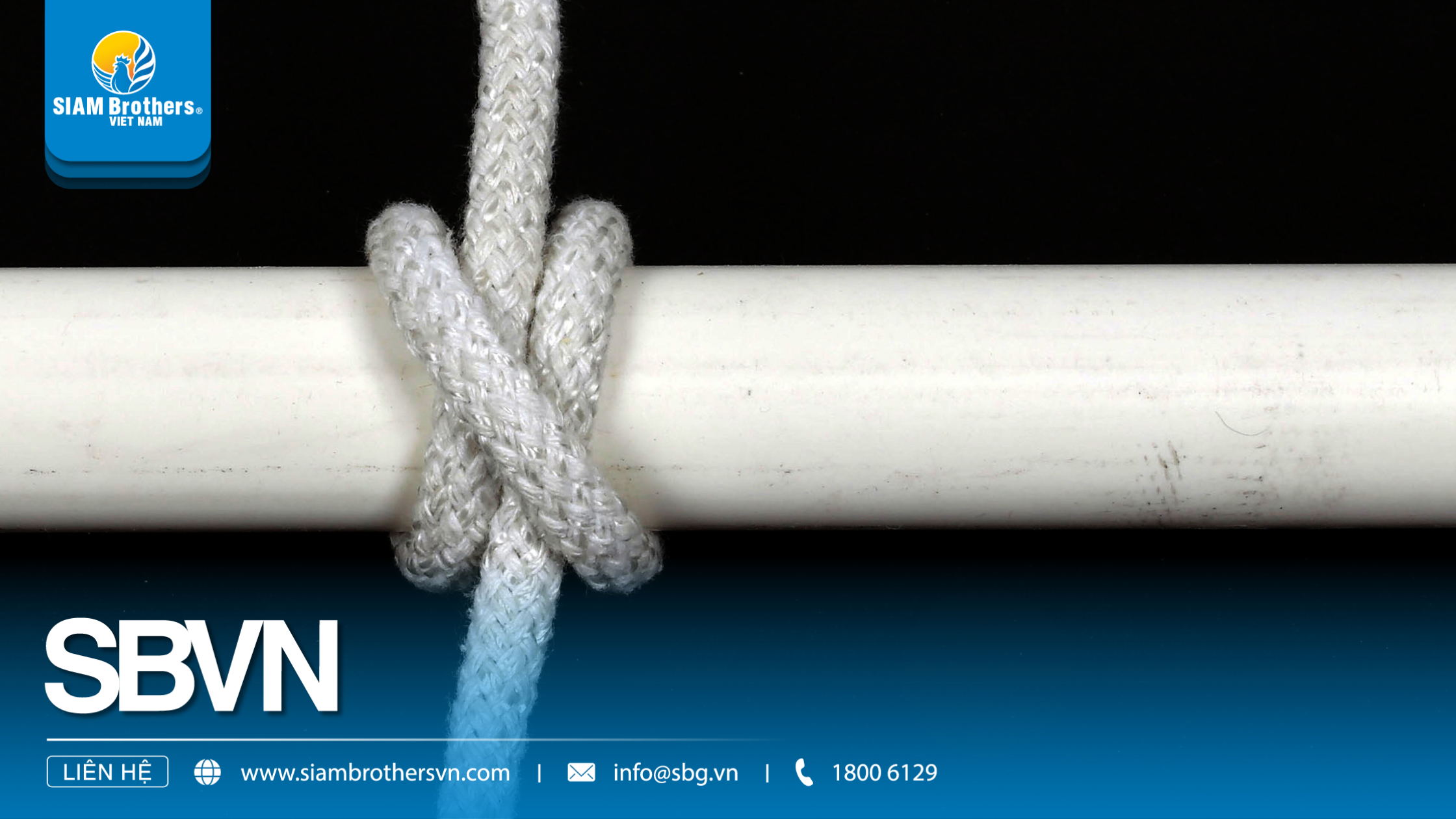
3. Tips to Keep Your Rope Ties Strong and Long-Lasting
3.1. Choose the Right Rope for Anchoring Purposes
- Each type of rope has unique properties in terms of elasticity, tensile strength, and abrasion resistance.
- Polypropylene (PP) ropes are lightweight and float on water, making them ideal for small boats or floating cages.
- Nylon ropes offer high elasticity and strong grip, suitable for fishing vessels and large cargo boats.
- Choosing the right material is the first and most crucial step in learning how to tie a rope securely for safe and efficient anchoring.
3.2. Tie the Knot Correctly and Apply Even Tension
- Every knot must be tightened in the right direction to achieve optimal friction.
- When practicing how to tie a rope securely, focus on maintaining even tension across all loops to prevent the knot from slipping.
- If you’re anchoring in rough seas, add an extra safety knot to enhance grip and stability.
- Substances like oil, grease, or solvents can weaken the synthetic fibers in PP or PE ropes.
- Keep ropes away from engines, exhaust pipes, or high-heat areas to prevent brittleness and breakage.
- Proper storage and handling significantly extend your rope’s lifespan and ensure reliable performance.
3.4. Use High-Quality Ropes from Trusted Brands
- SIAM Brothers Vietnam ropes are manufactured to international standards, featuring superior tensile strength, UV resistance, and corrosion protection.
- When combined with proper techniques in how to tie a rope securely, these ropes reduce the risk of breakage and ensure maximum safety for boats in all weather conditions.
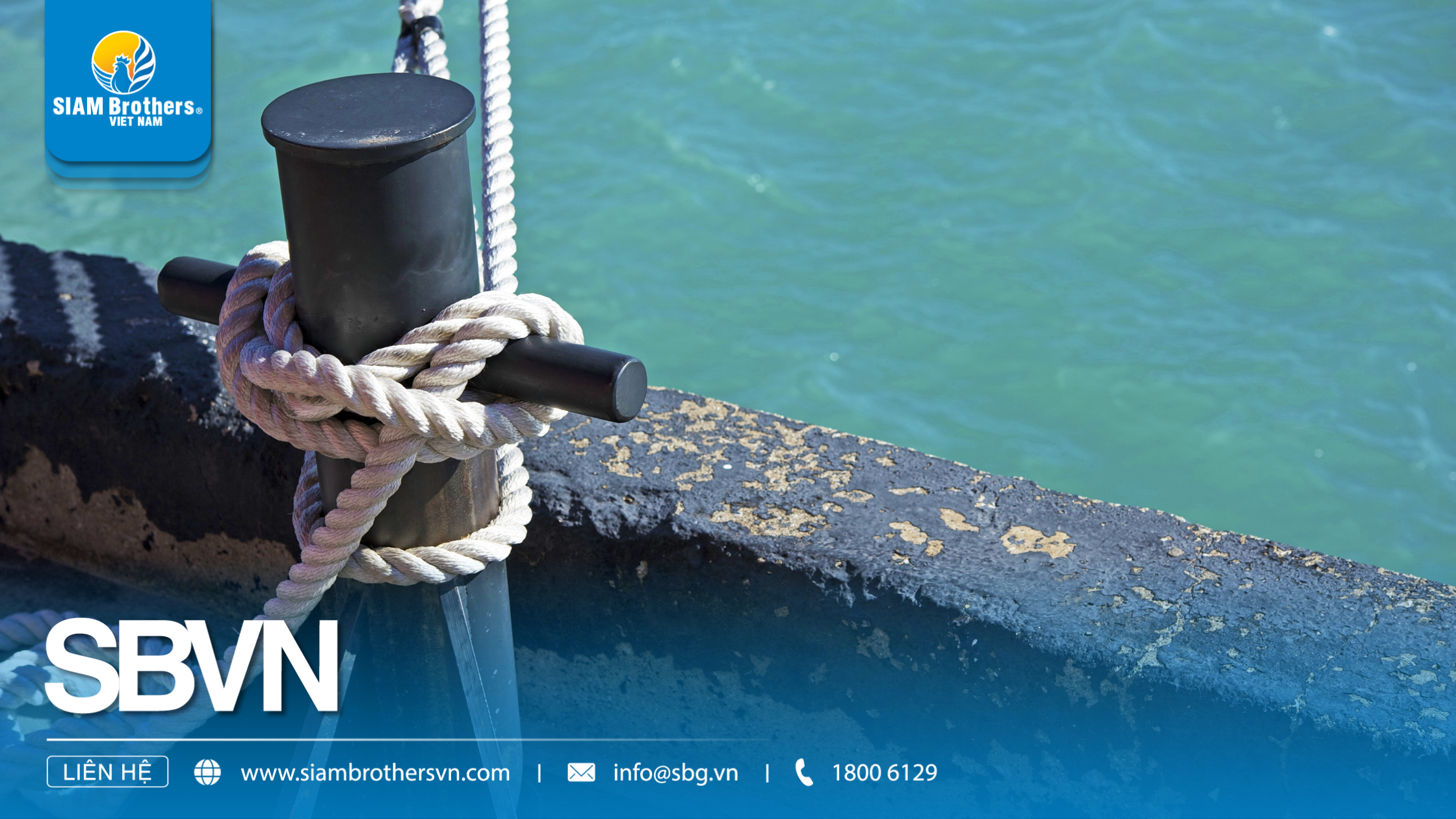
4. Common Mistakes When Tying Anchor Ropes and How to Fix Them
4.1. Using the Wrong Knot or Incorrect Technique
- One of the most common mistakes is using the wrong knot for the purpose.
- For example, the Clove Hitch is ideal for temporary mooring but may slip under heavy waves if used as a permanent anchor knot.
- To avoid this, regularly practice basic knots used in how to tie a rope securely, such as the Bowline, Figure Eight, and Double Half Hitch.
4.2. Not Applying Enough Tension When Tightening the Knot
- Even with the correct knot, failing to pull the rope tight enough can reduce friction and holding power.
- In strong winds or waves, the rope may slide off the anchor point.
- Always double-check by pulling both ends firmly after tying to ensure the knot is stable and secure.
4.3. Tying with Wet, Slippery, or Sandy Ropes
- Wet or sandy ropes significantly reduce friction, making knots prone to slipping even when tied correctly.
- Before practicing how to tie a rope securely, clean and dry the rope — especially PP or Nylon ones.
- Wearing gloves can also improve grip and precision in humid or slippery conditions.
4.4. Failing to Inspect the Rope Before and After Anchoring
- Worn, frayed, or broken fibers can decrease rope strength by 30–40%.
- Fishermen should inspect the entire length of the rope regularly, especially areas in contact with metal fittings.
- If damage is found, replace the rope immediately to maintain safety during operation.
4.5. Using Low-Quality or Unsuitable Ropes
- Another critical mistake is using ropes that are not designed for marine environments or heavy loads.
- Inferior ropes stretch easily, develop cracks, or lose grip after a few uses.
- The best solution is to choose high-quality Polypropylene, Polyester, or Nylon ropes from SIAM Brothers Vietnam, specially engineered for fisheries with proven tensile strength, UV resistance, and saltwater corrosion durability.
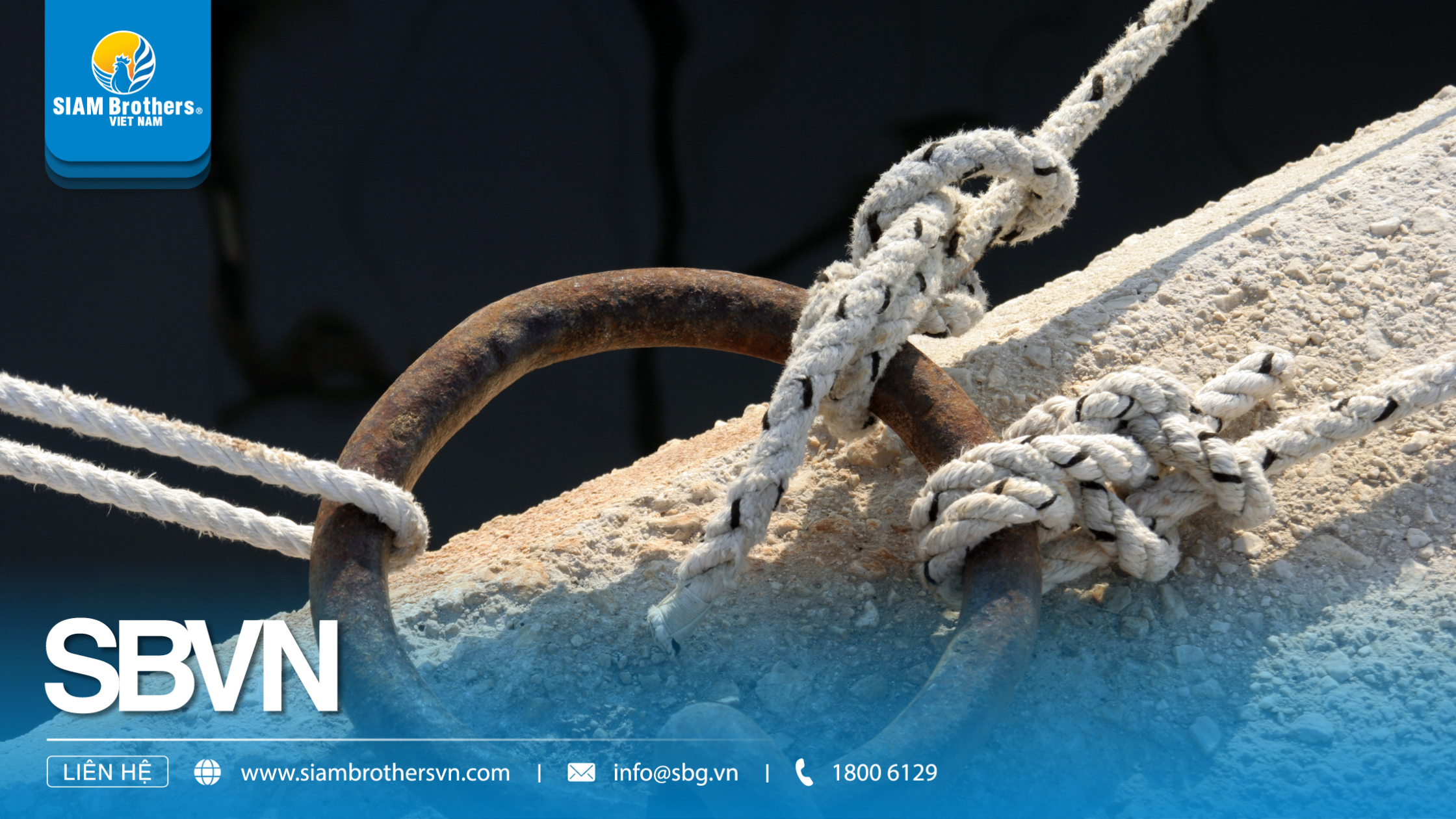
5. FAQs — Quick Answers to Common Questions About How to Tie a Rope Securely
5.1. What Type of Rope Is Best for Secure Boat Anchoring?
- Depending on your vessel type and sea conditions, fishermen should choose Nylon or Polypropylene (PP) ropes.
- Nylon ropes have excellent elasticity, ideal for large vessels and strong wave conditions.
- PP ropes are lightweight, float on water, and are easy to handle — perfect for small boats or floating cages.
- By choosing the right material and mastering how to tie a rope securely, fishermen can ensure maximum durability and safety for every anchoring setup.
5.2. How Do I Know If My Knot Is Tight and Secure Enough?
- After completing the knot, pull both rope ends in opposite directions.
- If the rope doesn’t slip or twist, your knot has achieved stable tension.
- It’s also important to inspect knots regularly, as saltwater and humidity can gradually loosen them.
- This principle is widely recommended by maritime experts as part of learning how to tie a rope securely for safe anchoring.
5.3. Should I Add a Backup Knot When Anchoring a Boat?
- Yes. A backup knot helps increase friction and prevents slippage, especially in strong winds or long-term mooring.
- When using smooth ropes such as PP or PE, adding a backup knot is an essential step to strengthen your technique and ensure the most secure rope tie possible.
5.4. Does a Frayed or Damaged Rope Affect Knot Strength?
- Absolutely. A frayed or cracked rope significantly reduces load capacity, making the knot more likely to loosen or snap under tension.
- Fishermen should replace ropes at the first sign of wear and always choose certified, high-quality ropes such as those from SIAM Brothers Vietnam — engineered for superior tensile strength, UV resistance, and long-term durability.
- This guarantees safety and reliability for every marine journey.
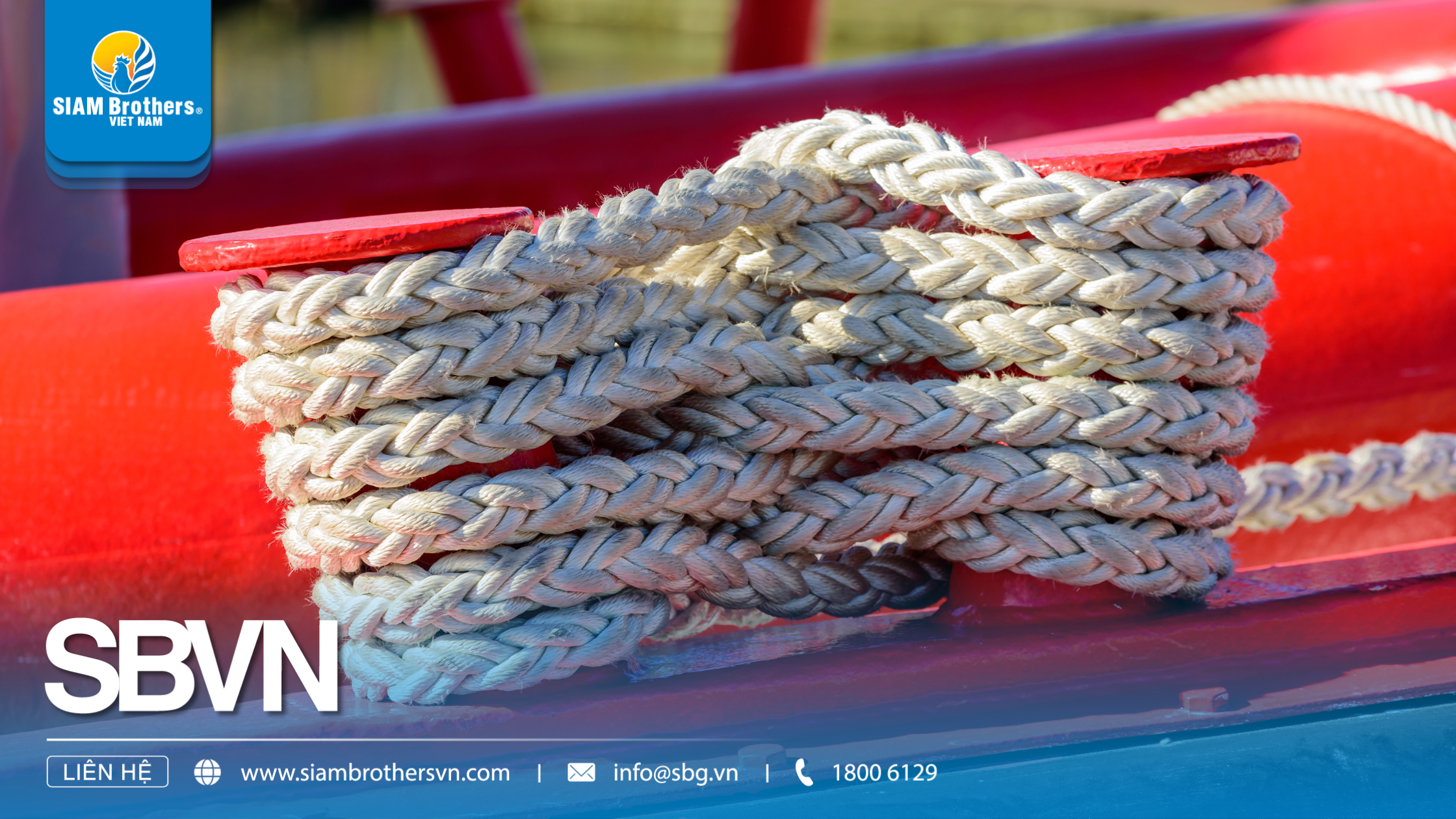
Learning how to tie a rope securely not only helps fishermen keep their boats stable when anchoring but also protects onboard equipment and minimizes risks in rough seas.
Choosing the right rope type, applying the correct tying technique, and performing regular inspections are key to long-term safety and performance.
SIAM Brothers Vietnam’s premium ropes, manufactured to international standards, deliver exceptional durability, abrasion resistance, and load capacity.
Visit siambrothersvn.com to explore optimized solutions for your vessel — and apply these professional knot-tying techniques to make every voyage safe, steady, and worry-free.
Source: SIAM Brothers Vietnam
Contact us:
► Address: 5th floor, VRG Building, 177 Hai Ba Trung Street., Xuan Hoa Ward, Ho Chi Minh City, Vietnam
► Hotline: 1800 6129
► Tel: (+84) 28 38 912 889
► Email: info@sbg.vn
► Follow us for more details at: Facebook - Zalo OA - Tiktok - Youtube - LinkedIn
Download SBVN ID app here:
► CHPlay
► Appstore










